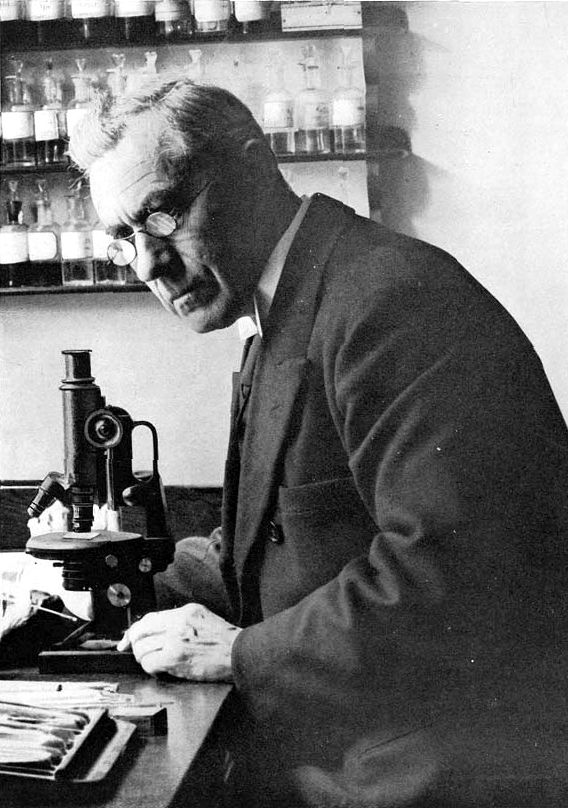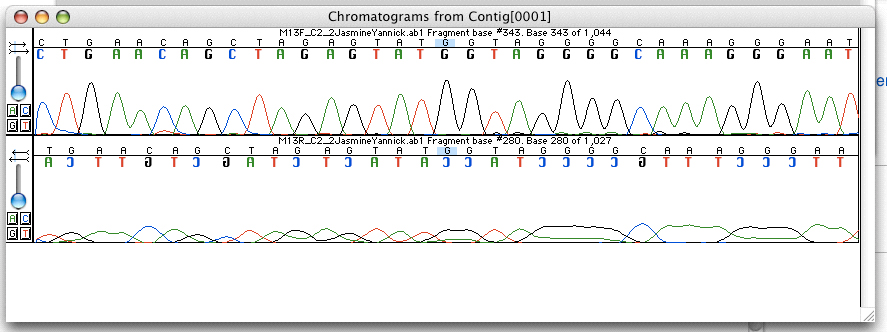|
Thiobacillus Denitrificans
''Thiobacillus denitrificans'' is a Gram-negative, obligate chemolithoautotroph. It was originally discovered by Martinus Beijerinck in 1904. Metabolism ''T. denitrificans'' is particularly notable for its ability to oxidize sulfur and uranium compounds in a nitrate-dependent manner. Genetics The genome of ''T. denitrificans'' has been sequenced. The genome is a single circular chromosome consisting of 2.9 Mbps and with a GC-content of 66.1%. References External links ''T. denitrificans'' genome sequencefrom NCBI The National Center for Biotechnology Information (NCBI) is part of the United States National Library of Medicine (NLM), a branch of the National Institutes of Health (NIH). It is approved and funded by the government of the United States. The ....Type strain of ''Thiobacillus denitrificans'' at Bac''Dive'' - the Bacterial Diversity Metadatabase Betaproteobacteria {{Betaproteobacteria-stub ... [...More Info...] [...Related Items...] OR: [Wikipedia] [Google] [Baidu] |
Bacteria
Bacteria (; singular: bacterium) are ubiquitous, mostly free-living organisms often consisting of one biological cell. They constitute a large domain of prokaryotic microorganisms. Typically a few micrometres in length, bacteria were among the first life forms to appear on Earth, and are present in most of its habitats. Bacteria inhabit soil, water, acidic hot springs, radioactive waste, and the deep biosphere of Earth's crust. Bacteria are vital in many stages of the nutrient cycle by recycling nutrients such as the fixation of nitrogen from the atmosphere. The nutrient cycle includes the decomposition of dead bodies; bacteria are responsible for the putrefaction stage in this process. In the biological communities surrounding hydrothermal vents and cold seeps, extremophile bacteria provide the nutrients needed to sustain life by converting dissolved compounds, such as hydrogen sulphide and methane, to energy. Bacteria also live in symbiotic and parasitic relationsh ... [...More Info...] [...Related Items...] OR: [Wikipedia] [Google] [Baidu] |
Pseudomonadota
Pseudomonadota (synonym Proteobacteria) is a major phylum of Gram-negative bacteria. The renaming of phyla in 2021 remains controversial among microbiologists, many of whom continue to use the earlier names of long standing in the literature. The phylum Proteobacteria includes a wide variety of pathogenic genera, such as ''Escherichia'', '' Salmonella'', ''Vibrio'', ''Yersinia'', ''Legionella'', and many others.Slonczewski JL, Foster JW, Foster E. Microbiology: An Evolving Science 5th Ed. WW Norton & Company; 2020. Others are free-living (nonparasitic) and include many of the bacteria responsible for nitrogen fixation. Carl Woese established this grouping in 1987, calling it informally the "purple bacteria and their relatives". Because of the great diversity of forms found in this group, it was later informally named Proteobacteria, after Proteus, a Greek god of the sea capable of assuming many different shapes (not after the Proteobacteria genus ''Proteus''). In 2021 the Internat ... [...More Info...] [...Related Items...] OR: [Wikipedia] [Google] [Baidu] |
Betaproteobacteria
Betaproteobacteria are a class of Gram-negative bacteria, and one of the eight classes of the phylum Pseudomonadota (synonym Proteobacteria). The ''Betaproteobacteria'' are a class comprising over 75 genera and 400 species of bacteria. Together, the ''Betaproteobacteria'' represent a broad variety of metabolic strategies and occupy diverse environments from obligate pathogens living within host organisms to oligotrophic groundwater ecosystems. Whilst most members of the ''Betaproteobacteria'' are heterotrophic, deriving both their carbon and electrons from organocarbon sources, some are photoheterotrophic, deriving energy from light and carbon from organocarbon sources. Other genera are autotrophic, deriving their carbon from bicarbonate or carbon dioxide and their electrons from reduced inorganic ions such as nitrite, ammonium, thiosulfate or sulfide — many of these chemolithoautotrophic. ''Betaproteobacteria'' are economically important, with roles in maintaining soil p ... [...More Info...] [...Related Items...] OR: [Wikipedia] [Google] [Baidu] |
Hydrogenophilales
The Hydrogenophilaceae are a family of the Hydrogenophilalia, with two genera – '' Hydrogenophilus'' and '' Tepidiphilus''. Like all ''Pseudomonadota'', they are Gram-negative. All known species are thermophilic, growing around 50 °C and using molecular hydrogen or organic molecules as their source of electrons to support growth - some species are autotrophs. The genus ''Thiobacillus'' was previously considered to be a member in this family but was reclassified into the order ''Nitrosomonadales'' at the same time that the ''Hydrogenophilales'' were removed from the ''Betaproteobacteria'' and the class ''Hydrogenophilalia'' was formed. '' Hydrogenophilus thermoluteolus'' is a facultative chemolithoautotroph originally isolated from a hot spring; however, it was detected 2004 in ice core samples retrieved from a depth around 3 km within the ice covering Lake Vostok in Antarctica Antarctica () is Earth's southernmost and least-populated continent. Situated al ... [...More Info...] [...Related Items...] OR: [Wikipedia] [Google] [Baidu] |
Hydrogenophilaceae
The Hydrogenophilaceae are a family of the Hydrogenophilalia, with two genera – '' Hydrogenophilus'' and '' Tepidiphilus''. Like all ''Pseudomonadota'', they are Gram-negative. All known species are thermophilic, growing around 50 °C and using molecular hydrogen or organic molecules as their source of electrons to support growth - some species are autotrophs. The genus ''Thiobacillus'' was previously considered to be a member in this family but was reclassified into the order ''Nitrosomonadales'' at the same time that the ''Hydrogenophilales'' were removed from the ''Betaproteobacteria'' and the class ''Hydrogenophilalia'' was formed. '' Hydrogenophilus thermoluteolus'' is a facultative chemolithoautotroph originally isolated from a hot spring; however, it was detected 2004 in ice core samples retrieved from a depth around 3 km within the ice covering Lake Vostok in Antarctica Antarctica () is Earth's southernmost and least-populated continent. Situated alm ... [...More Info...] [...Related Items...] OR: [Wikipedia] [Google] [Baidu] |
Thiobacillus
''Thiobacillus'' is a genus of Gram-negative Betaproteobacteria. '' Thiobacillus thioparus'' is the type species of the genus, and the type strain thereof is the StarkeyT strain, isolated by Robert Starkey in the 1930s from a field at Rutgers University in the United States of America. While over 30 "species" have been named in this genus since it was defined by Martinus Beijerinck in 1904, (the first strain was observed by the biological oceanographer Alexander Nathansohn in 1902 - likely what we would now call ''Halothiobacillus neapolitanus''), most names were never validly or effectively published. The remainder were either reclassified into ''Paracoccus'', '' Starkeya'' (both in the Alphaproteobacteria); '' Sulfuriferula'', ''Annwoodia'', ''Thiomonas'' (in the Betaproteobacteria); ''Halothiobacillus'', ''Guyparkeria'' (in the Gammaproteobacteria), or ''Thermithiobacillus'' or ''Acidithiobacillus'' (in the Acidithiobacillia). The very loosely defined "species" '' Thiobacillu ... [...More Info...] [...Related Items...] OR: [Wikipedia] [Google] [Baidu] |
Gram-negative
Gram-negative bacteria are bacteria that do not retain the crystal violet stain used in the Gram staining method of bacterial differentiation. They are characterized by their cell envelopes, which are composed of a thin peptidoglycan cell wall sandwiched between an inner cytoplasmic cell membrane and a bacterial outer membrane. Gram-negative bacteria are found in virtually all environments on Earth that support life. The gram-negative bacteria include the model organism ''Escherichia coli'', as well as many pathogenic bacteria, such as ''Pseudomonas aeruginosa'', ''Chlamydia trachomatis'', and ''Yersinia pestis''. They are a significant medical challenge as their outer membrane protects them from many antibiotics (including penicillin), detergents that would normally damage the inner cell membrane, and lysozyme, an antimicrobial enzyme produced by animals that forms part of the innate immune system. Additionally, the outer leaflet of this membrane comprises a complex lipo ... [...More Info...] [...Related Items...] OR: [Wikipedia] [Google] [Baidu] |
Chemolithoautotroph
A lithoautotroph is an organism which derives energy from reactions of reduced compounds of mineral (inorganic) origin. Two types of lithoautotrophs are distinguished by their energy source; photolithoautotrophs derive their energy from light while chemolithoautotrophs (chemolithotrophs or chemoautotrophs) derive their energy from chemical reactions. Chemolithoautotrophs are exclusively microbes. Photolithoautotrophs include macroflora such as plants; these do not possess the ability to use mineral sources of reduced compounds for energy. Most chemolithoautotrophs belong to the domain Bacteria, while some belong to the domain Archaea. Lithoautotrophic bacteria can only use inorganic molecules as substrates in their energy-releasing reactions. The term "lithotroph" is from Greek ''lithos'' (''λίθος'') meaning "rock" and ''trōphos'' (τροφοσ) meaning "consumer"; literally, it may be read "eaters of rock". The "lithotroph" part of the name refers to the fact that these org ... [...More Info...] [...Related Items...] OR: [Wikipedia] [Google] [Baidu] |
Martinus Beijerinck
Martinus Willem Beijerinck (, 16 March 1851 – 1 January 1931) was a Dutch microbiologist and botanist who was one of the founders of virology and environmental microbiology. He is credited with the discovery of viruses, which he called "''contagium vivum fluidum''". Life Early life and education Born in Amsterdam, Beijerinck studied at the Technical School of Delft, where he was awarded the degree of Chemical Engineer in 1872. He obtained his Doctor of Science degree from the University of Leiden in 1877. At the time, Delft, then a Polytechnic, did not have the right to confer doctorates, so Leiden did this for them. He became a teacher in microbiology at the Agricultural School in Wageningen (now Wageningen University) and later at the ''Polytechnische Hogeschool Delft'' (Delft Polytechnic, currently Delft University of Technology) (from 1895). He established the Delft School of Microbiology. His studies of agricultural and industrial microbiology yielded fundamental disco ... [...More Info...] [...Related Items...] OR: [Wikipedia] [Google] [Baidu] |
Sulfur
Sulfur (or sulphur in British English) is a chemical element with the symbol S and atomic number 16. It is abundant, multivalent and nonmetallic. Under normal conditions, sulfur atoms form cyclic octatomic molecules with a chemical formula S8. Elemental sulfur is a bright yellow, crystalline solid at room temperature. Sulfur is the tenth most abundant element by mass in the universe and the fifth most on Earth. Though sometimes found in pure, native form, sulfur on Earth usually occurs as sulfide and sulfate minerals. Being abundant in native form, sulfur was known in ancient times, being mentioned for its uses in ancient India, ancient Greece, China, and ancient Egypt. Historically and in literature sulfur is also called brimstone, which means "burning stone". Today, almost all elemental sulfur is produced as a byproduct of removing sulfur-containing contaminants from natural gas and petroleum.. Downloahere The greatest commercial use of the element is the production o ... [...More Info...] [...Related Items...] OR: [Wikipedia] [Google] [Baidu] |
Uranium
Uranium is a chemical element with the symbol U and atomic number 92. It is a silvery-grey metal in the actinide series of the periodic table. A uranium atom has 92 protons and 92 electrons, of which 6 are valence electrons. Uranium is weakly radioactive because all isotopes of uranium are unstable; the half-lives of its naturally occurring isotopes range between 159,200 years and 4.5 billion years. The most common isotopes in natural uranium are uranium-238 (which has 146 neutrons and accounts for over 99% of uranium on Earth) and uranium-235 (which has 143 neutrons). Uranium has the highest atomic weight of the primordially occurring elements. Its density is about 70% higher than that of lead, and slightly lower than that of gold or tungsten. It occurs naturally in low concentrations of a few parts per million in soil, rock and water, and is commercially extracted from uranium-bearing minerals such as uraninite. In nature, uranium is found as uranium-238 (99. ... [...More Info...] [...Related Items...] OR: [Wikipedia] [Google] [Baidu] |
Genome Sequencing
Whole genome sequencing (WGS), also known as full genome sequencing, complete genome sequencing, or entire genome sequencing, is the process of determining the entirety, or nearly the entirety, of the DNA sequence of an organism's genome at a single time. This entails sequencing all of an organism's chromosomal DNA as well as DNA contained in the mitochondria and, for plants, in the chloroplast. Whole genome sequencing has largely been used as a research tool, but was being introduced to clinics in 2014. In the future of personalized medicine, whole genome sequence data may be an important tool to guide therapeutic intervention. The tool of gene sequencing at SNP level is also used to pinpoint functional variants from association studies and improve the knowledge available to researchers interested in evolutionary biology, and hence may lay the foundation for predicting disease susceptibility and drug response. Whole genome sequencing should not be confused with DNA profil ... [...More Info...] [...Related Items...] OR: [Wikipedia] [Google] [Baidu] |





